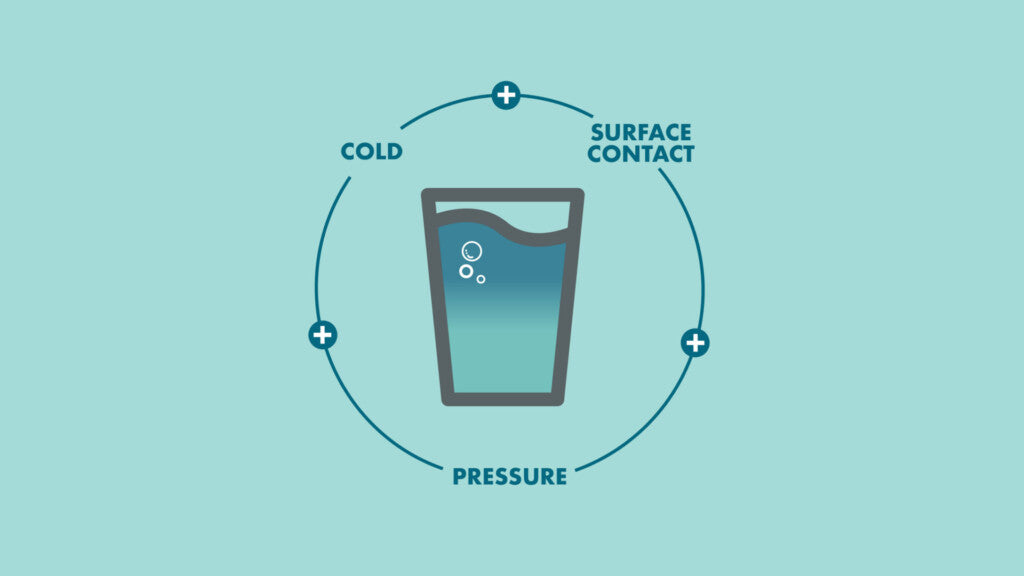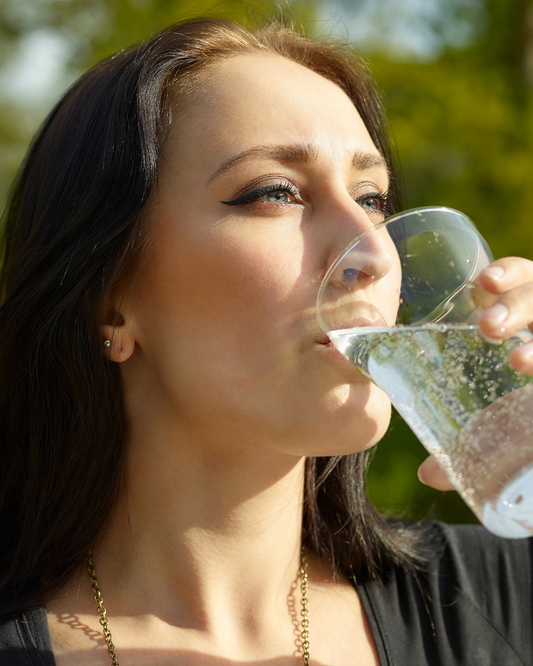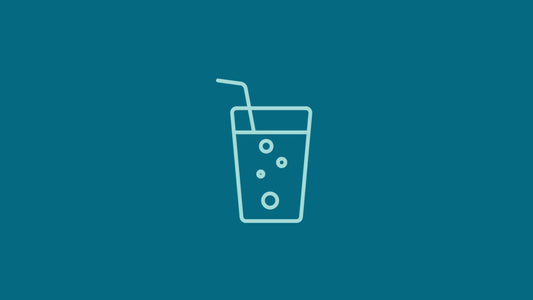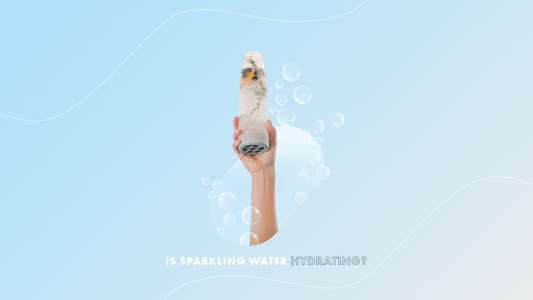
Great carbonation is the key to the best sparkling beverages out there. The tingly, tiny bubbles add flavour and feel in your mouth, but how exactly are they created and what level of carbonation is right for you?
The level of carbonation (CO2 volume) is determined by the technology used to create it. In this post we will explore five different sparkling water brands, from bottled grocery store varieties to at-home carbonation systems, to better understand the various carbonation methods, levels of carbonation and which one is right for you!
The Basics
Before diving into the comparisons, one must understand the basic principles of carbonation. Multiple factors affect the level of carbonation and therefore it’s taste and mouthfeel. To help determine what to expect from different brands and different carbonation levels, we need to look to the science behind carbonation. Simply put, the level of carbonation is impacted by 3 factors: Cold + Pressure + Surface Contact

SURFACE CONTACT between CO2 and the fluid is where the gas absorption happens. The more surface contact between the CO2 and the water, the faster it will be absorbed. A lot of bubbles moving around quickly, means a lot of surface contact and therefore a lot of gas absorbed by the water faster. This won’t happen on its own, remember that the gas wants to just float up and sit calmly above the water, not dive down!
PRESSURE allows the water to absorb the CO2. When carbon dioxide gas is added to cold water under pressure, the gas will dissolve into the liquid. The level of carbonation achieved will depend on the pressure applied.
COLD is key to carbonation. Bubbles are created through the absorption of carbon dioxide (CO2) into liquid. As the temperature of the liquid decreases, more CO2 can be absorbed by the liquid.



The Contenders
In order to demonstrate the different carbonation methods/processes and levels, we tested the volume of carbonation from five different brands: Badoit, San Pellegrino, Sodastream (Fizzi One Touch model), Perrier and Spärkel to determine what level of carbonation you can expect from each brand.

The Tools
To measure the volume of carbonation, we used a scientifically designed measurement tool from Pepsico – well known carbonation experts. The measurement device assesses the temperature and pressure of a carbonated fluid and offers a carbonation measurement in terms of the volume of CO2 per volume of fluid.
The sliding chart provides a simple way to calculate the CO2 volume. There are two versions – for sugary beverages and sugar-free – we’ll be using the sugar-free table in this case. Note that sparkling water (sugar-free) and sodas (beverages with sugar), like Pepsi & Coke are measured on different carbonation scales because sugar impedes the absorption of the CO2, so they require more carbonation. A carbonation rating of 4.0 would be considered heavy carbonation for a sugary beverage such as soda.


The Test
We tested home sparkling water systems from Spärkel and Sodastream’s Fizzi One Touch model, along with Badoit, Perrier and San Pellegrino purchased at our local grocer. All were tested at a constant cold water temperature between 39-41 F (3.9-5 C) with an average temperature of 40F/4.4C. All were tested multiple times with generally consistent carbonation results across tests, with the exception of Sodastream (see detailed explanation below).
The Results
The following shows a visual representation of the carbonation test results, followed by a more detailed written description. Please note that SodaStream’s results are presented separately because of the varied results.
Don’t forget the science of carbonation when looking at the carbonation levels and why they differ:
Surface Contact + Pressure + Temperature = Carbonation

To make things simple, let’s break the results into groups by method of carbonation:
BADOIT, SAN PELLEGRINO & PERRIER: Commercially bottled and canned sparkling water are carbonated using large industrial tanks at exactly the precise pressure level and carefully controlled surface contact duration to achieve exactly the brand’s desired carbonation every time. Consistency is key to any consumer brand. This results in a standardized and precise carbonation method with the same outcome every time as reflected in our test results. It allows brands to offer different products catered to different tastes in carbonation levels. Badoit caters to those who prefer light carbonation, San Pellegrino to those who like moderate carbonated beverages and Perrier to those who have a taste for heavy carbonation.
SPÄRKEL: Spärkel’s at-home carbonation system consistently generated the same carbonation by level every time. This occurs because each carbonator is identical, and as a result the potential CO2 is also identical. Spärkel allows users to choose their preferred level 1-5. Each level allows a different duration of CO2/liquid surface contact. As a result, you can achieve light to heavy carbonation with Spärkel, depending on the level you choose. Spärkel creates an identical amount of CO2 exposed to surface contact for the amount of time needed for consistent carbonation by level every time. To show the Spärkel system’s 5 different levels of carbonation, we have included a chart below with the results of the carbonation level for each setting.

SODASTREAM: SodaStream’s Fizzi One Touch at-home system also offers different levels (1-3) to choose from, but creating consistent carbonation levels is a challenge because of Sodastream’s CO2 tank. Each time the tank is used, there is less CO2 in the tank. As a result, the pressure from the tank will vary with each use, meaning the carbonation levels will vary with each use as well. Additionally, after about 20 uses the Fizzi One Touch programming tries to compensate for the declining tank levels by jetting in additional gas. The outcome is a highly variable carbonation level by usage, as you can see in the data chart below. Ultimately, Sodastream’s pre-programmed 1-3 level buttons resulted in light, moderate and heavy carbonation levels in testing, with some of the heaviest carbonation levels as well as the lowest. The result is that the system does not give you a consistent carbonation level each time you use it.
As per SodaStream’s recommendations, each 60L CO2 tank carbonates approximately 60L of water, although it is dependent on the level of carbonation you choose. The point at which the CO2 tank emptied during our testing is marked by a dashed line in the chart below.

A Note on Temperature: Remember that cold temperature is key to carbonation. Carbonation levels for Perrier, San Pellegrino and Badoit will remain consistent after they are bottled/canned. This is because the carbonation levels were set when they were commercially sealed at the bottling factory at a controlled temperature.
Carbonation levels for Spärkel and Sodastream will vary depending on the water’s temperature. If the temperature is lowered, the carbonation level will increase. If the temperature is increased, the carbonation will decrease. To get consistent carbonation (at the level you like) using an at-home carbonation system, you must use consistently cold liquid.
Conclusion
It’s important for everyone to understand their preferred level of carbonation and how to achieve it! Whether you love your favourite commercial brand or your home Spärkel or SodaStream system, we hope you enjoy your bubbles your way!
If you have any comments or questions about our research or the science of carbonation, we would love to hear from you! Reach out to us at hello@sparkel.com




